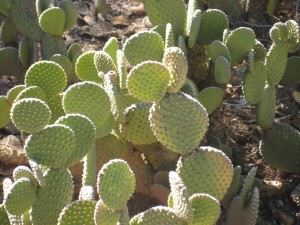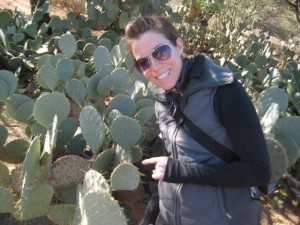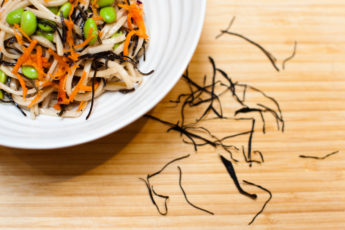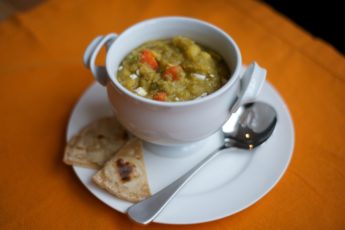I have been coming to Arizona for over 10 years, and I think I have taken my surroundings down here for granted. There is something just so peculiar about the cactus. They portray most images that represent the southwest as a wild desert plant.
Everyone knows not to touch a cactus, and most would think that a cactus just has three arms and stands up tall. Yes that is true, most varieties do, but there are so many more. And what is even more amazing about these unique plants, is that they have healing properties ( like most green things in our natural world).
Cacti – represent a plant that is loaded with minerals, natural sugars, fiber and water. Once the prickly pieces are removed, a cactus is actually edible. It has a soft fleshy center that makes it a nice “meaty” dish.
Large round cactus leaves are called Nopal and sometimes they are topped with red little prickly pears. A big slab of cactus can be cooked up with some Mexican spices and served up with some brown rice! Tastes kind of like crisp asparagus or a ripe green bean. It is loaded with beta carotene, iron, B vitmains, vitamin C and calcium.
Another well known plant in this category is the Agave. Despite all of it’s recent controversial representation it is quite a remarkable plant. It takes 7 years to harvest nectar from just one fruit and will yield gallons of pure nectar. When it is done in this natural way, this is the way to enjoy the nectar. Since Agave has been in such high demand over the last few years, these natural practices have been lost and so has it’s nutrients. But nonetheless, they are still beautiful to look at and the nectar still tastes delicious (in some recipes).
Also interesting to note, is that all cacti are succulents but not all succenlents are cacti. This leads me to the wonderous, healing and amazing Aloe Vera plant which would fall into this category. It’s leaves are filled with a juicy gelly center the oozes it’s goodness into our health. It has all kinds of healing properties from soothing inflammation and burns while also being antibacterial and antifungal. You can drink it, eat it or put it directly on your skin. Having an Aloe Vera plant around your home is a great idea – they need so little attention, just a lot of sunlight!
See Aloe smoothie recipe below!
Some other fascinating plants I came across in the desert were Jojoba, Jade, Yucca and Creeping Snake Cactus, Ocotillo, Cholla and so many more!
It’s no wonder most of these desert plants are well protected with prickly pointers and tough skin – if I had all these healing abilities I would want to protect myself as best as I could! So be careful and handle your Cacti and desert plants with care!
As I mentioned earlier Aloe Vera can be taken internally, and what better way then in a smoothie. If you can’t get your hands on a fresh leaf – then getting a jug of pure 100% Aloe Vera juice is your next best option.
WILD ALOE BERRY SMOOTHIE DELIGHT
1-2 cups rice milk or hemp milk
1/4 cup pure aloe vera juice, or the inside gel of one leaf
1-2 scoops SunWarrior Protein (enter coupon code MW007 to get 5% off your order)
1 cup frozen berries
1 tbsp acai berry powder or 1 frozen pulp pack
1 ripe banana
1 tbsp Ormus Super Greens or 1 handful of spinach
1 tbsp each goji berries, chia seeds and manuka honey
Place all ingredients in a high-speed blender. Blend on high for 1-3 minutes.
Serve in two tall glasses with a Glass Dharma Straw!




